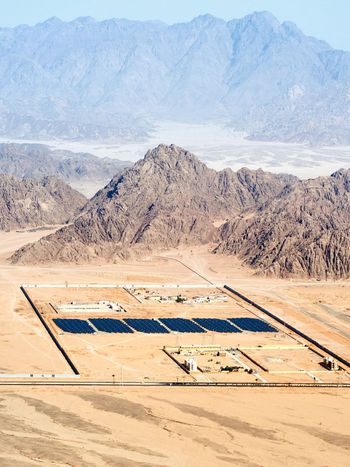The Future Energy System of Systems
The safe and reliable supply of electricity and other forms of clean energy to billions of people is becoming an increasingly complex and challenging task as the world transitions to renewable energy generation. A major challenge is the growing gap between central system operations and participating units. Transforming the energy system's organizational structure into a hierarchically ordered system of subsystems is a promising approach to keeping the energy system manageable and making the units accessible for system operation. Within each subsystem, the number of actors and degrees of freedom for optimization remain manageable. At the same time, the exchange of energy and information between the subsystems allows for system-wide techno-economic optimization.

by Felix Flatter, Stefan Goetz, RPTU Kaiserslautern-Landau, Germany
CIGRE NGN
The energy sector is undergoing a transformation with the increasing integration of renewable energy sources and decentralized energy units into the existing power grid. In recent years, it has become clear that the physical structure of the energy system with its hierarchical layers will remain unchanged and that most, if not all, technological prerequisites have been developed. An unsolved issue, however, is the coordination of millions of small, decentralized units in low and medium voltage levels on one side and larger units in high and extra high voltage levels for active power balancing on the other. The challenge lies in the gap between the decentralized units and the central system operation. These challenges primarily involve market integration, grid integration, ICT connections, measurement availability, and bi-directional communication for trading. The interaction between grid operators at different hierarchical levels also remains unclear, and the exponential growth of data in combination with the high number of units adds to the complexity of the situation.
To overcome these challenges, previously widely centralized coordination and quasi-global optimization may not be appropriate. Groups of energy professionals and researchers worldwide have widely independently developed the idea of re-organizing the energy system into somewhat self-sustaining and autonomous subsystems. These subsystems—acting internally under some level of self-rule and interacting with the outside as one entity passing on anything that cannot be solved locally—are sometimes referred to as autonomous energy systems or simply energy cells, after their biological model. They are organized in a hierarchical order, with each level solving local tasks locally whenever feasible. Notably, this solution within a subsystem does not necessarily imply a specific goal, such as enforcing power balance within subsystems as much as possible. For example, the operator of a subsystem may use flexibilities in its area of responsibility to solve local network congestion. The residual power of a subsystem is exchanged with the next higher subsystem (or vice versa), while ensuring that all necessary information for the operation of the grid and the market is included. On that higher level, tasks are solved that require a greater overview of the overall system, e.g., active power balancing across all top-level subsystems or optimization of sector coupling units as well as (seasonal) storage. This nested exchange of power and information that bridges the gap between technological units and system operations. In most instances, the number of participants—may they be subsystems themselves or atomic elements—in each subsystem remains within the same order of magnitude across all hierarchical levels, typically between 100 and 1000. Since this manageable number of participants only needs to be connected to the relevant subsystem management unit, the complexity of the necessary information, communication, and measurement infrastructure is greatly reduced. In contrast to other aggregation schemes, this solution, however, still promises solutions closer the global optimum of the entire system.
This general concept has emerged and progressed in several embodiments and under various key words. Autonomous Energy Systems, developed by the United States National Renewable Energy Laboratory, represent a new approach to the operation of energy networks in which super-fast, real-time optimization is achieved on all levels, each using all its available flexibilities. Thus, on each level, energy generation and production are balanced as much as possible at any given moment, and the remaining energy exchange is handled by the next higher level. This hierarchical power and energy exchange avoids the need for sequential markets. It furthermore simplifies operation as it does not require balancing power, allowing locally autonomous operation. However, it is important to note that local optimization is dominant in this approach and does not necessarily lead to the global optimum.

Cellular Energy Systems, as proposed by the German research consortium in the publicly funded project ZellNetz2050, represent an evolution of traditional energy grid operation, incorporating day-ahead and intraday markets with trading intervals of 15 minutes to 1 hour. Deviations from forecasts or predicted grid states are likely to occur within these intervals, requiring sequential operation to compensate and thus leading to the need for balancing power. In this approach, the overall system management uses all flexibility across hierarchical levels as each subsystem management first gathers, processes, and eventually forwards all bids along the hierarchy to the top level, where the central management entity performs the optimization. Nodal pricing serves as an economic incentive to ensure efficient energy allocation and grid usage. Thus, from the perspective of another energy cell, each energy cell is a black box with minimum information exchange. Each energy cell inherently accounts for all internal grid constraints during market clearing, resulting in an integrated market and system operation that produces a naturally congestion-free system at each market step. Another major advantage of this approach is its compatibility with solutions such as the European Energy Communities, where nearby consumers trade energy and support the democratization of the energy system. If an Energy Community or similar entity adopts the standardized interface to the next higher-level energy cell, the management within the Energy Community is of no relevance to the overall system.
When implemented according to specific technological, economic, and regional requirements, the subsystem approach allows for more efficient use of all available resources, resulting in a more resilient and flexible power system. It is also applicable to ancillary services, such as frequency control and reserve provision, which are a focus of future more-electronic grids. Further research is needed in the area of truly distributed optimization, i.e., solving an optimization problem with distributed units while reaching a global optimum.
Thumbnail & banner credit: JoeyCheung on iStock


